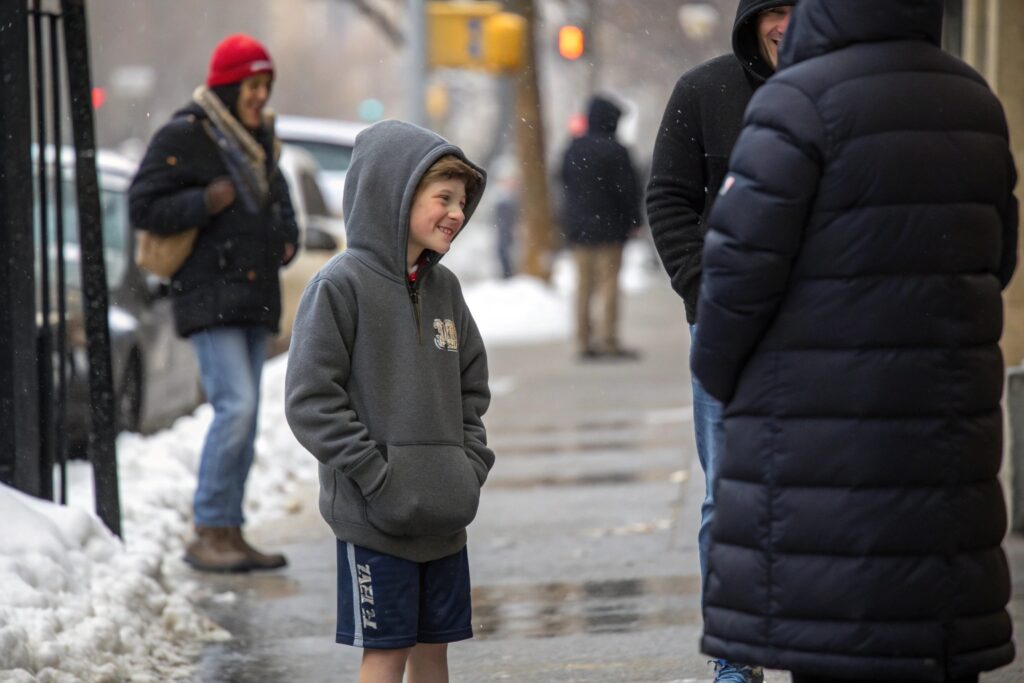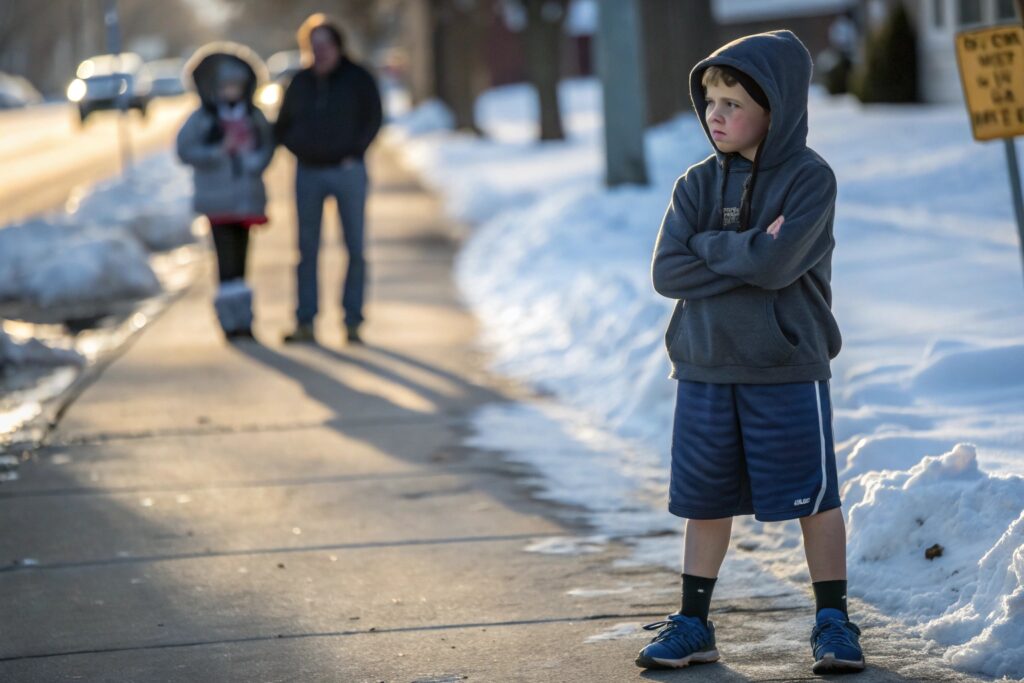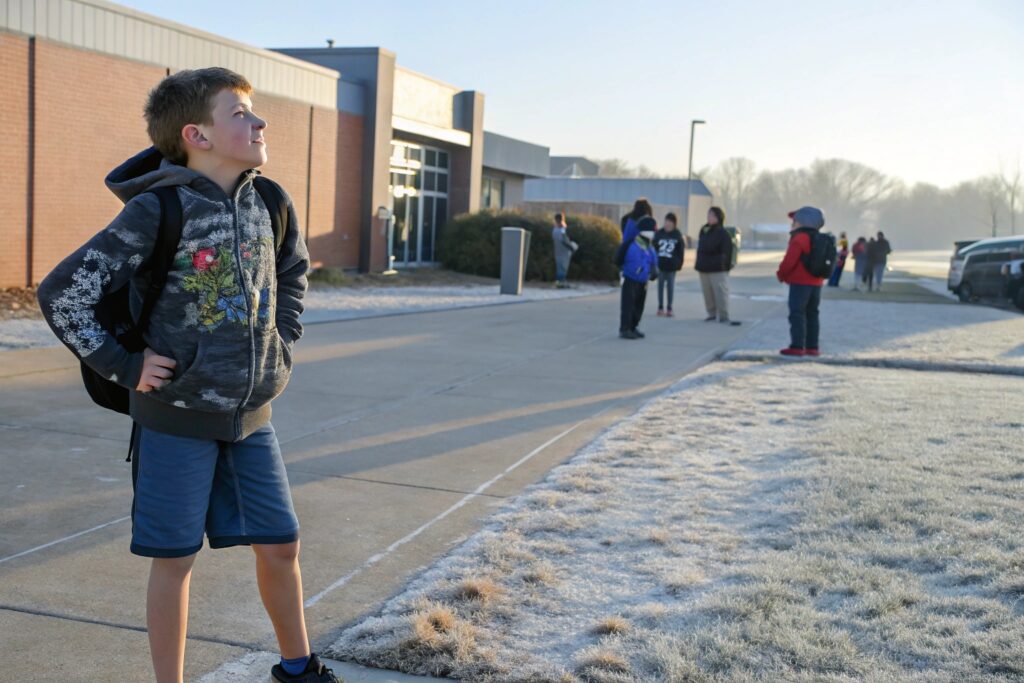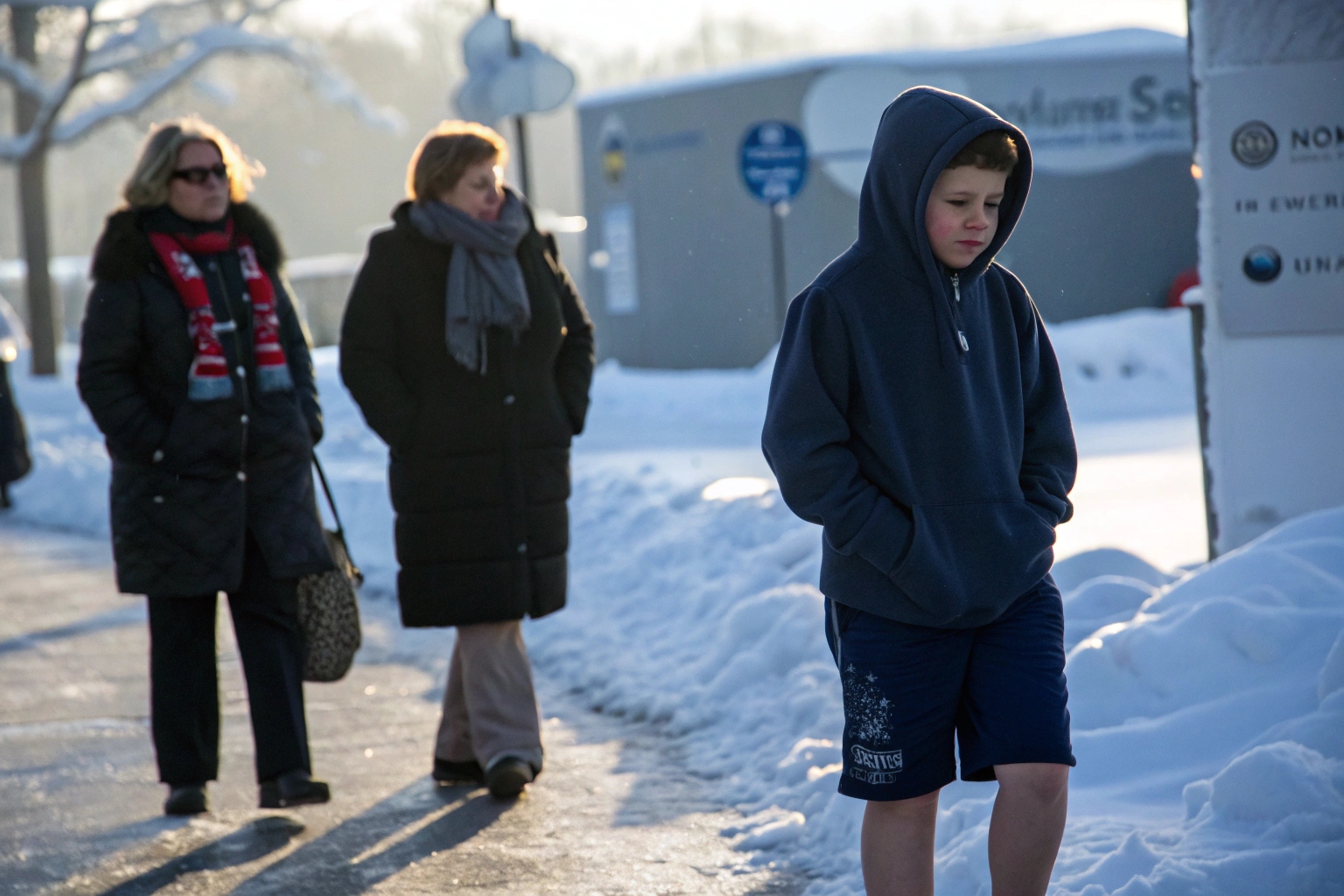It’s winter. You’re bundled up in a parka. But your child walks out the door in shorts—and insists he’s not cold. Sound familiar?
Some kids wear shorts in cold weather because they don’t feel cold the same way, resist adult control, or use clothing to express independence.
If you're wondering whether it's just a phase or something more, this article breaks down the real reasons behind cold-weather shorts and what parents should do about it.
Do Kids Feel Cold Differently Than Adults?
We assume everyone feels the cold the same way. But kids often surprise us with their comfort in seemingly freezing temperatures.
Yes, children often feel cold differently than adults because of physiological, behavioral, and emotional factors that affect their perception of temperature.

Why do some children genuinely feel warm even when it's cold outside?
Children have higher metabolic rates than adults. Their bodies generate more heat as they grow, play, and process energy. Some children also move constantly—running, jumping, fidgeting—which helps them stay warm even when the air is chilly. Their smaller body size can help them warm up faster, although they may cool down quickly too.
However, perception is a big part of this. A child who’s focused on fun—like heading to the playground—may not even register the cold. Their attention is on the excitement, not on physical discomfort. For them, shorts mean freedom, play, and fun—not frostbite.
That said, not all kids are immune to cold. Some are more sensitive than others. But it’s common for active children to report feeling warm even when adults reach for another layer.
How do emotional and developmental stages influence their temperature response?
Many children, especially between ages 4 and 12, are still learning to recognize and respond to bodily cues. Hunger, thirst, tiredness—and yes, cold—are sensations they’re learning to interpret. They might say, “I’m not cold,” because they don’t understand the subtle signs of discomfort yet.
Here’s a quick breakdown:
| Factor | Kids | Adults |
|---|---|---|
| Metabolism | Higher | Lower |
| Activity Level | High (esp. boys) | Lower |
| Body Awareness | Developing | Mature |
| Focus | External (play) | Internal (comfort) |
Why Boys Insist on Wearing Shorts in Winter?
You offer them pants. You show them the frost. You plead with logic. Still, some boys refuse. But it’s not about temperature—it’s about something deeper.
Many boys wear shorts in winter to assert control, fit in with peers, or challenge adult rules as part of developing independence.

What are the social reasons behind the shorts-in-winter trend, especially among boys?
Shorts can be a kind of social uniform. In many schools, boys who wear shorts year-round are seen as “tough,” “cool,” or “unbothered.” That makes it less about weather and more about identity. Some boys proudly say, “I’ve worn shorts all year,” like it’s a badge of honor.
There’s also peer influence. If a group of friends wears shorts, others want to follow. It becomes a trend—especially in middle and upper elementary grades. Boys may fear being seen as “soft” if they switch to pants, even when it’s snowing.
One mother I spoke to said her son insisted on wearing shorts because “real athletes don’t wear pants.” He wasn’t cold—he was competing in a quiet social contest.
How do parental reactions reinforce the behavior?
Sometimes, the more we push, the harder they resist. Refusing pants becomes a power play. It’s one of the few decisions kids can control completely. No matter how many reminders, rules, or lectures we give, the choice still comes down to them.
By arguing, we may unintentionally reinforce the behavior. The child learns: "This is how I get noticed. This is how I push back." Instead, offering choices within boundaries can work better: “Shorts are fine today, but if the temperature drops below 30°F, we’ll switch.”
Snapshot of common motivations:
| Motivation | Description |
|---|---|
| Peer Approval | "My friends do it too." |
| Control | "This is my choice." |
| Comfort | "I like how they feel." |
| Habit | "I always wear shorts." |
The Psychology Behind Cold-Weather Shorts
Clothing isn’t just about warmth—it’s about identity, expression, and autonomy. For kids, a simple pair of shorts can carry a lot of meaning.
Wearing shorts in cold weather can reflect a child’s desire to build identity, resist authority, or express emotional resilience.

Why does wearing shorts feel empowering to some children?
Children are constantly told what to do. Eat your veggies. Go to school. Do your homework. Clothing is one of the few areas where they can exercise freedom. Choosing shorts—even when it's cold—is one way they claim that freedom.
The act of choosing nonconformity gives them a sense of bravery. It might even feel rebellious. “Everyone else is cold, but I’m not.” That sets them apart and boosts their confidence.
For some kids, especially those with a strong-willed or spirited personality, this choice becomes a daily act of self-assertion. Parents can interpret it as resistance—but the child sees it as ownership.
How can this clothing habit relate to personality and emotional growth?
Psychologists often link fashion choices to emotional development. Kids who resist seasonal dressing may:
- Be more independent
- Have high sensory tolerance
- Be naturally assertive
- Crave recognition
Instead of seeing shorts as defiance, parents can reframe it as exploration. Kids are testing boundaries, figuring out their style, and learning what matters to them.
Here’s how personality types relate to winter shorts:
| Personality Trait | Common Behavior |
|---|---|
| Independent | Chooses clothes without input |
| Assertive | Wears shorts despite advice |
| Peer-Oriented | Mimics trends to belong |
| Curious | Tests how long they can “endure” |
Is It Safe for Kids to Wear Shorts in Winter?
You might worry that bare legs mean serious health risks. But what does science really say about the safety of shorts in the cold?
Wearing shorts in winter is not inherently dangerous if the child is active, healthy, and not exposed to extreme cold for long periods.

What are the medical concerns with children wearing shorts in cold weather?
The main risk isn’t hypothermia—it’s frostbite. That usually occurs when exposed skin is in contact with sub-freezing temperatures for an extended time, especially in wind. Legs are less prone than fingers or toes, but still vulnerable in harsh conditions.
Other concerns include dry skin, chafing, or worsening of skin conditions like eczema. Some children may also develop muscle tightness or joint discomfort if they stay too cold for too long.
However, if your child is only outdoors briefly—say, walking from the car to school—shorts may not pose a real threat. Pediatricians suggest focusing on full-body warmth: a hat, gloves, socks, and a warm torso are more crucial.
How can parents balance safety and freedom when it comes to winter dressing?
Set non-negotiable rules based on temperature. For example:
- “Below 30°F = no shorts”
- “If we’ll be outside longer than 10 minutes, wear pants”
- “You can bring shorts and change at school if needed”
This gives kids agency while prioritizing safety. Many schools already set dress codes for winter, and framing your decision around health rather than obedience helps reduce resistance.
Summary guide:
| Temperature | Recommended Dress |
|---|---|
| 40°F–60°F | Shorts okay with layers |
| 30°F–39°F | Pants strongly advised |
| Below 30°F | Pants required, plus extras |
| Wind/Precipitation | Use judgment regardless of temp |
Conclusion
Some kids wear shorts in winter to explore autonomy, fit in socially, or simply because they don’t feel the cold. With the right boundaries, it’s often more about personality than risk.










